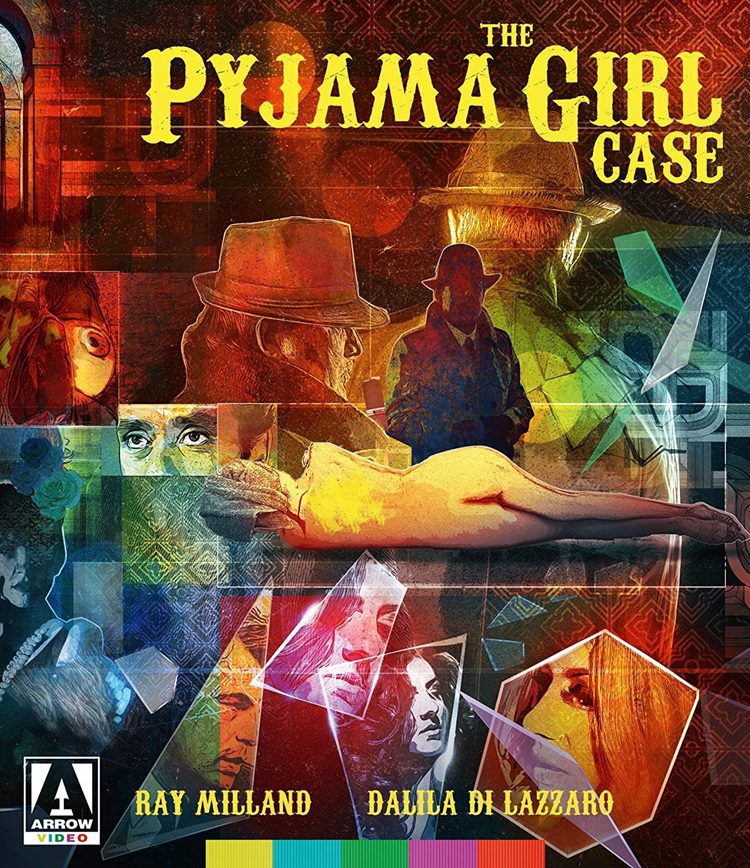
In 1934, the corpse of a woman clad in exotic silk pajamas was found lying in a culvert in New South Wales, Australia. She had been beaten, shot, and partially burned, leaving her identity a mystery. Police were perplexed. The media made it a sensation and the crime enthralled the country. Especially after the body became a public spectacle when she was laid in a formaldehyde bath for display in Sydney. In 1977, Flavio Mogherini turned the story into a movie.
It is an odd, often-salacious, rather-dull police procedural that for some reason gets lumped into the giallo genre (Arrow Video calls it that, as does Wikipedia and pretty much every source I could find) even though it has virtually none of the genre’s characteristics. This is a film that within the first half hour includes two nude scenes, two instance of a man hiding his lover’s underwear, a man masturbating while watching a woman bend over in a short skirt, but not a single knife-wielding man with black gloves. The only murder is that of the pajama- (or pyjama-, if you prefer) clad girl and she is dead before the opening scene.
Mogherini presents two parallel narratives that seemed to have nothing to do with each other but wind up connecting at the end. An intelligent viewer will likely figure out the connection pretty quickly. Dimmer ones like myself will find it surprising yet somehow not particularly enthralling. The first narrative presents the murder case. After the pajama-girl’s body is found (here she’s found inside an abandoned car on a beach instead of a culvert, one of many changes the film makes from history), a retired policeman Inspector Thompson – or possibly Timpson as the subtitles spell it – begs to take on the case. He’s played to grumpy perfection by the late, great Ray Milland. The younger, better-educated Inspector assigned to the case seems bored by it, grabbing the first suspect he can find. The second narrative follows Glenda (Dalila Di Lazzaro) and her relationship with her husband and her lover. These scenes just kind of wander about as we watch her struggle juggling two jobs and two men neither of which hold a lot of narrative interest.
There are two scenes with a lasting shocking power. The first recreates the real-life moment when the police put the dead girl into the formaldehyde bath and open it up like a museum exhibit. We see a line of people come in to gawk. Some seem to be in shock but most seem to be pervy men looking for a little kink. The second involves Glenda as she leads two men upstairs to her motel room where they proceed to have sex with her while one of the men’s teenaged boy watches. Mogherini focuses not on the sex act but on Glenda who stares blankly at the boy making him increasingly uncomfortable.
In between these two shocks is a whole lot of tedium. Thompson follows leads, none of which are particularly interesting, and Glenda goes about living life. The film seems to be saying something about life in Australia for immigrants. It was a Spanish/Italian production shot on location in Australia using a mostly European cast. Rather than hide the accents, the film uses their foreignness as a plot point. The characters are isolated and lonely. We often find them in barren landscapes emphasizing how they don’t belong. It’s a strange thematic element for what is essentially a low-budget horror movie, and it isn’t pulled off with much finesse but I guess they get bonus point for trying something different. It all culminates in an ending that both solves the murder and brings both stories together. It’s supposed to be a shock, but mostly it just made me glad it was finally wrapping up.
The movie was restored by Arrow Video and scanned at a 2K resolution from the original 35mm film. It is an unusually lush-looking film for the genre with plenty of scenes featuring beautiful shots of the Australian locale. There aren’t any compression issues that I noticed or instances of scratching or debris. It is occasionally a little grainy and coarse in its darker moments, but mostly it’s a nice restoration. Audio has been fully restored with both English and Italian tracks. It sounds good with dialogue coming in clear. Riz Ortoliani’s odd electronic score can be a bit overpowering at times but I suspect that was kind of the point. Amanda Lear sings several songs that were clearly meant to be hit pop songs, but I found to be pretty obnoxious.
Extras include a lively, informative commentary from Troy Howarth, a nearly half-hour feature on the globalization of the giallo genre. Plus interviews with actor Howard Ross, editor Alberto Tagliavia, assistant director Ferruccio Castronuovo, and a newly edited archival interview with composer Riz Ortolani. There is the usual image gallery, trailer, and full-color booklet with an essay.
The Pyjama Girl Case is an odd little film. A so-called giallo based upon a real-life murder case that’s shot in Australia, is chock full of naked titilation, and nearly devoid of violence and gore. Ultimately, a big bore. Arrow Video has given it their full treatment. I’m always happy to see nice editions of Italian genre films, but I can’t outright recommend this to anyone.